|
Storage of fosssils
so small you can hardly see them with the naked eye is a real
problem. This is the prototype for such a box, and separates
the fossils into small partitions, carfuly seals them under glass,
then locks shut.
Click on thumbnails
below for larger view:
 |
Solidworks
drawing of finished box. The two compartments hold the trays
and are covered by a microscope slide. Then a lid goes in, and
can be bolted in place with a small screw. |
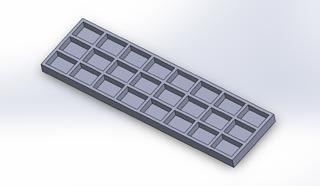 |
One
of the two trays. Each compartment is about 1/4" square
and about 1/8" deep. |
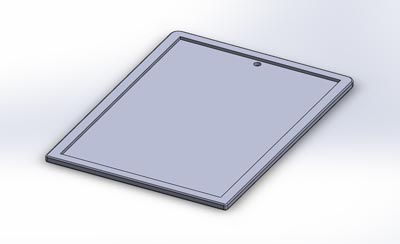 |
Slide
in lid with recess for labels. |
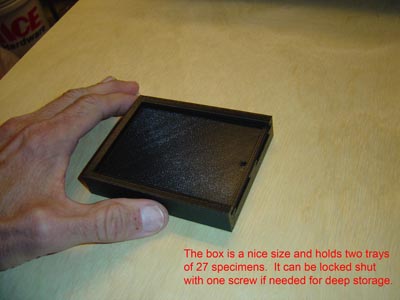 |
Here
is the finished assembled box. |
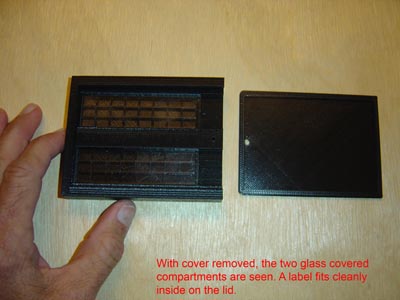 |
Sliding
the lid off reveals the two compartments with glass covers that
fit tight as to not mix the comparments with the sand grain sized
fossils. |
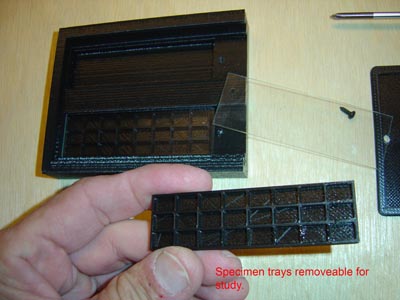 |
The
glass covers slide out from the sides, and the trays can be removed. |
 |
Putting
the slide covers back in to protect the specimens. |
|

HOME